Courage Is A Shapeshifter, oil on panel, 10×10″
I recently finished this painting and after posting a couple WIP images of it, I’d gotten a few questions about it, so I thought I’d show a few progression images with some info describing the stages.
______________________________
Stage 1 – Abstract Mark-making
The tools I used in this stage are:
Bristle chip brush to lay paint down onto the surface
Sable mop to soften large areas
Silicon spatula
Small piece of foam core
The surface is a pre-gessoed cradled masonite panel. It’s white and pretty slick, not very absorbent, but not entirely resistant either – more absorbent than you’d think. I covered the entire surface with a few darks – umber, prussian blue, transparent red iron oxide, transparent gold ochre. When the entire surface is covered, it looks like a very dark brown, and when wiped away will reveal a lovely stained surface in varying degrees of contrast depending on the pressure the spatula is pressed to the surface, as well as how much it’s tilted. If you’d like to maintain the stained color, it’s best not to wipe and brush and smear the paint on the surface too many times or the color will start to get muddy. I added and subtracted paint a few times in order to reach this composition of abstract marks, feathering edges and softening areas with a mop brush, and carving into it again with a spatula or foam core. Another thing to mention is that I turn the surface in different directions as well during this stage, not always keeping it in one position, in order to keep the marks spontaneous and the forms less predictable, as well as to be able to see the marks anew in each direction.
______________________________
Stage 2 – the Interim/Observing Stage
I often have several paintings going at once, and after I finished the abstract stage of this painting, I had set it aside with the intention to come back to it when the marks had dried enough to paint on top of without moving the paint on the surface. In my studio, I’ve set up several areas around the room that are great for setting aside wet paintings while still having them in view. By having them around me in view and just sort of living there in that space with me daily, it helps me to see the paintings differently or catch a glimpse of something by seeing it out of the corner of my eye while I’m working on other things.
The way I find my subjectmatter much of the time is very much like how we see things in the clouds. I may see several things in the abstracts I am painting and/or the paintings I have surrounding me in my studio, but it’s not until I see something that really strikes me as something I want to pursue, that I might start to define it within the abstract and refine areas in order to commit to it. This goes for the painting I might actually be painting on at the moment as well as the paintings I have surrounding me. If one day, an image shows itself that I hadn’t seen in it before or if it is consistently showing itself to me, I might go grab it and put it back on the easel and continue to work on it. I work on several paintings at once in varying stages, and because of the nature of how I work, I’ve found that way of working to be a good organization of my painting time. Because we all work differently, it’s not necessarily the best way for everyone to organize their time, but it works very well for me.
In this one, I saw the face in profile after having it there with me for a few days. The nose is especially what stood out to me as a very distinct rounded form of the tip of the nose. Once the nose revealed itself, the trail of other forms started to appear – the eye socket and some of the planes of the face then started to emerge as well. At this stage, I haven’t added any paint, just observing and absorbing – but definitely noticing that I am jiving with what I’m seeing, and that’s definitely a great time to pick it back up and start working on those areas that I’m seeing reveal themselves.
______________________________
Stage 2 – lay-in of the face in the marks
I basically just used a small-to-medium sized round to lay-in the profile where I saw it. Because of the nature of the size of the painting and because I was just blocking in notes of where I saw things, the brush is this size – not tiny because it’s not about detail, and not too big because the area I’m working in isn’t big either. Because the painting in its abstract state was already very smooth, I used a sable to remain consistent with the existing smooth quality. My intent was for the face to feel cohesive with the abstract, balanced in the composition, and not necessarily dominant in focus.
______________________________
Stage 3 – blocking in the larger planes of the face
This was mainly a continuation of the previous stage but a building of the forms of the larger planes of the face into the indications I noted in Stage 2. I’ve basically used very thin varying amounts of white for value changes, and I did use a bit of burnt umber. The combination of burnt umber and white over the top of a predominantly warm underpainting makes the color appear to be much cooler than if a burnt umber and white painting was painted on solely a white panel with nothing warm surrounding it. It’s important to note how thin I was painting here at this stage and, really, throughout the entire painting. I was building the forms up in a way that fills the area, but also gradates into the abstract as well so that in some areas the abstract shows through a bit, and in some areas the abstract is completely covered, but it flows from one to the other and feels balanced. The overall value was too light to be left this way, but I was painting it this way knowing what I would be doing with it in the next stage – both in color and in value. At this stage, the important part is to have built the forms up to feel cohesive with its surroundings, but be sufficiently covered. So, this stage is basically a layering of a few thin layers of paint to get that effect.
______________________________
Stage 4 – glazing color and gradations of value
After having left the painting to sit a couple days and dry as I worked on other paintings, I returned to it to add the glaze of color and value to the face as well as some other areas such as the outer edges and atmospheric broader areas. I use a small bit of Linseed oil added to the paint for glazing. Throughout this whole process, I’d been using sables, some smaller and some medium sized relative to the area I was working in. I also have used a mop in the lower left corner of the painting to lose a bit of the clutter of the abstract in that area. This required me to mix the color to match what was already there on the surface and soften edges there, as well as add darks to push it back in value. I have done this on a lot of the abstract, actually, which is what I do in many of my paintings. There is a point where I focus on small areas of the abstract in order to get it to recede and/or come forward based on what I feel works for the overall composition. Sometimes, it’s not a smooth area, but is textured or has a textured appearance, so I will match that effect of the texture by actually going in and painting an extension of that to make it appear as if it was that way from the beginning. This requires an attention to detail as well as to color. It is a mixing of color to match what was built up in several layers – which are two different ways of achieving a color (and which is also a whole article in and of itself).
______________________________
Stage 5 – adding a bit of lights to the face and surroundings
While the glaze is still wet, I modeled the forms by adding a bit of light to bring some areas forward again from having pushed them back by glazing previously. You can see this mainly in the cheekbone and muzzle area of the face, as well as the chin and overall lightening of the edges. I also lightened a bit of the background especially near the chin and neck.
______________________________
Stage 6 – observing the entire composition and adding finishing touches
Continuing on from Stage 4 and 5, this stage is a lot of stepping back and assessing what might need tweaking, adding, losing, or enhancing in order for the whole composition to feel cohesive. It’s a lot more about observing and less about painting. At this point, I’ve added many small touches into the abstract. These are details that I feel helped the marks ‘lift up’ a bit in some areas, which also gave them a bit more attention or importance, especially as they draw closer to the face. I wasn’t necessarily attempting to define them as any one thing in particular, with the overall intention of allowing for the opportunity for them to be interpreted as many different things. To me, the abstract represents a bit of everything, and more of a concept than a tangible thing, as many of the abstract areas of my work does.
I really enjoyed working on this painting, and I’m glad to be able to share a bit about the process here with you.


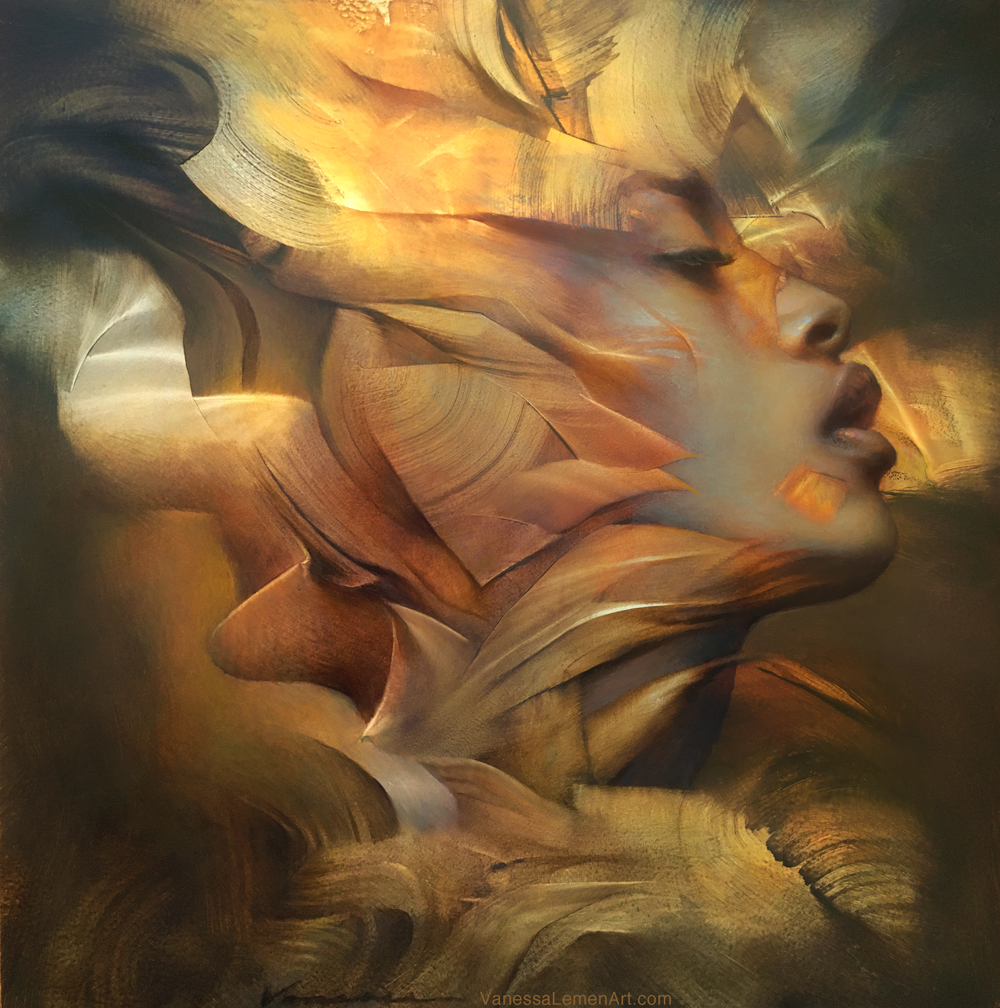

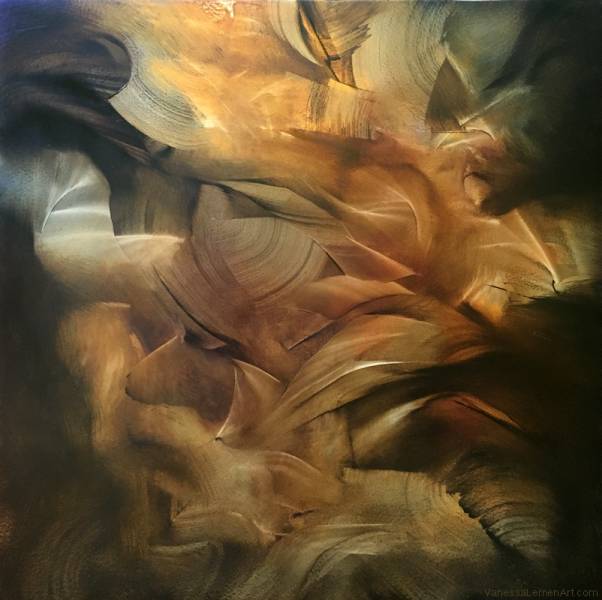
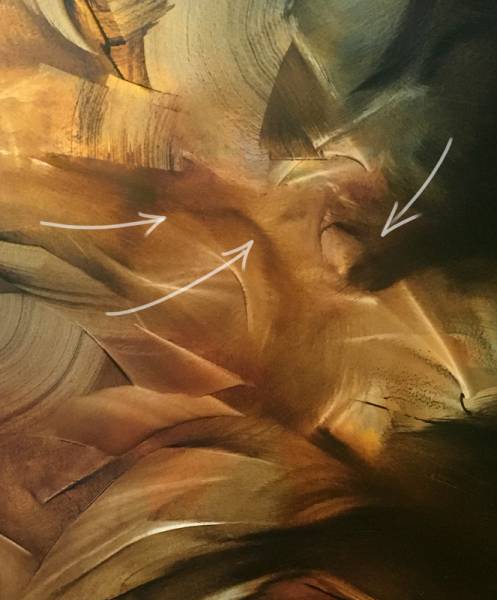
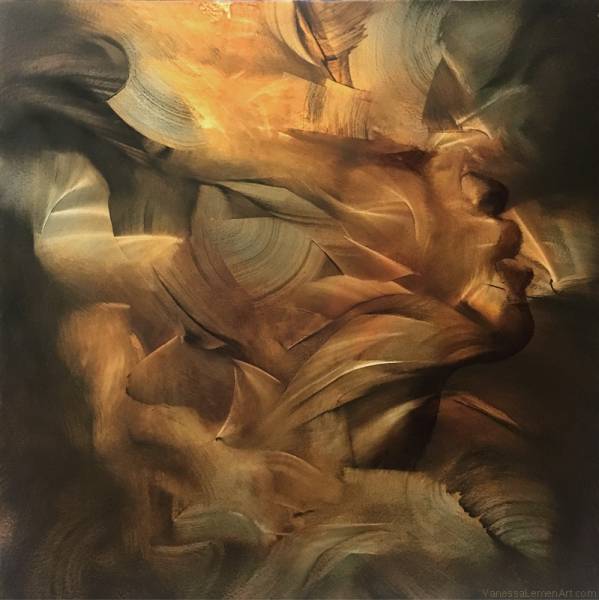



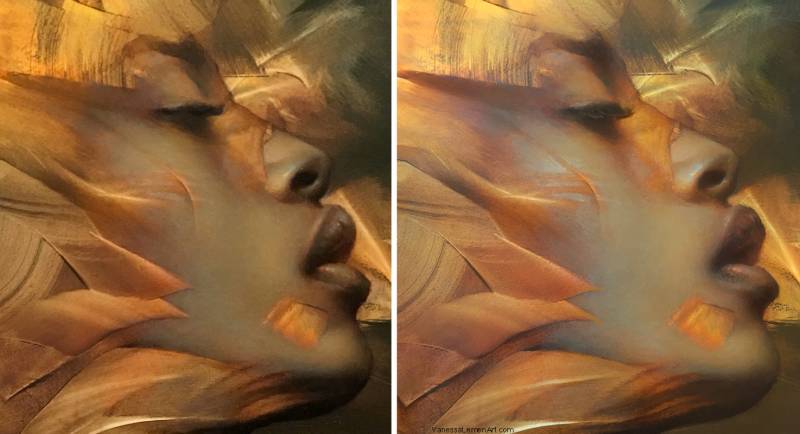

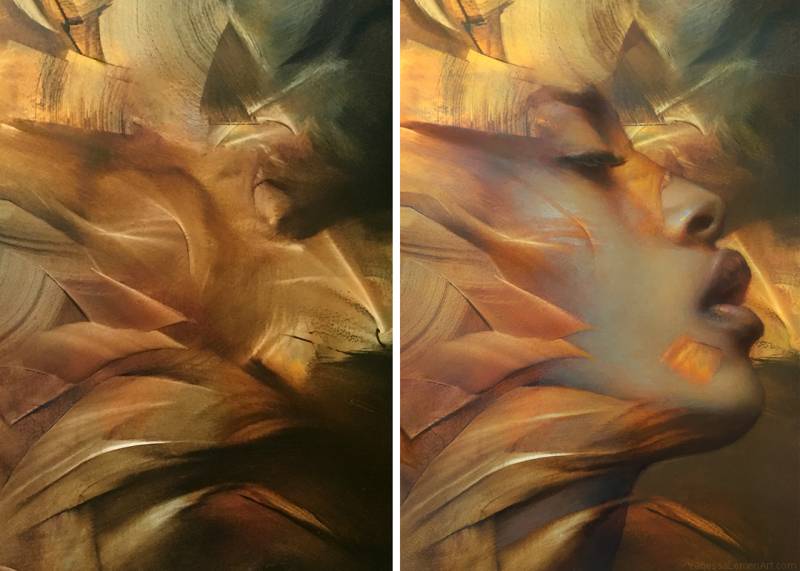
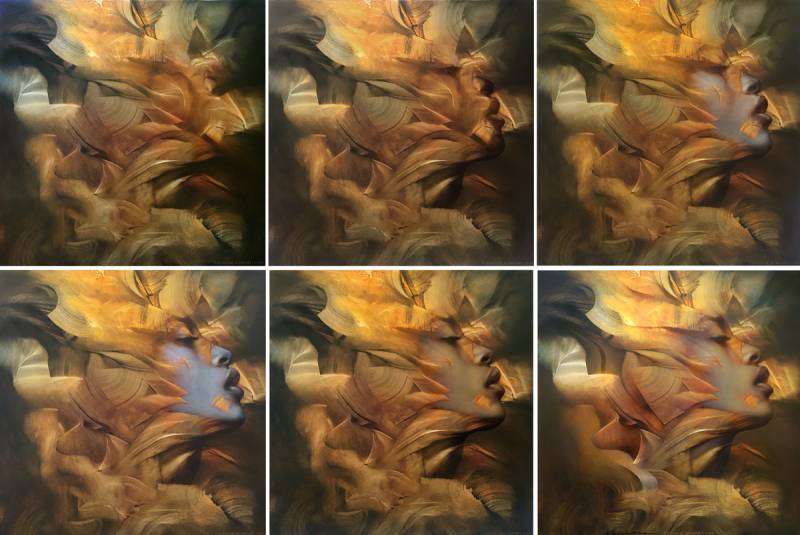
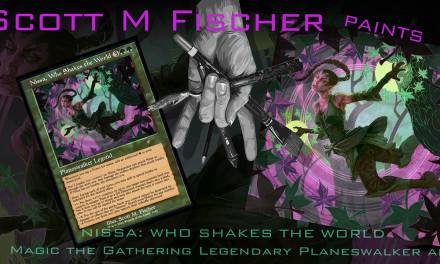
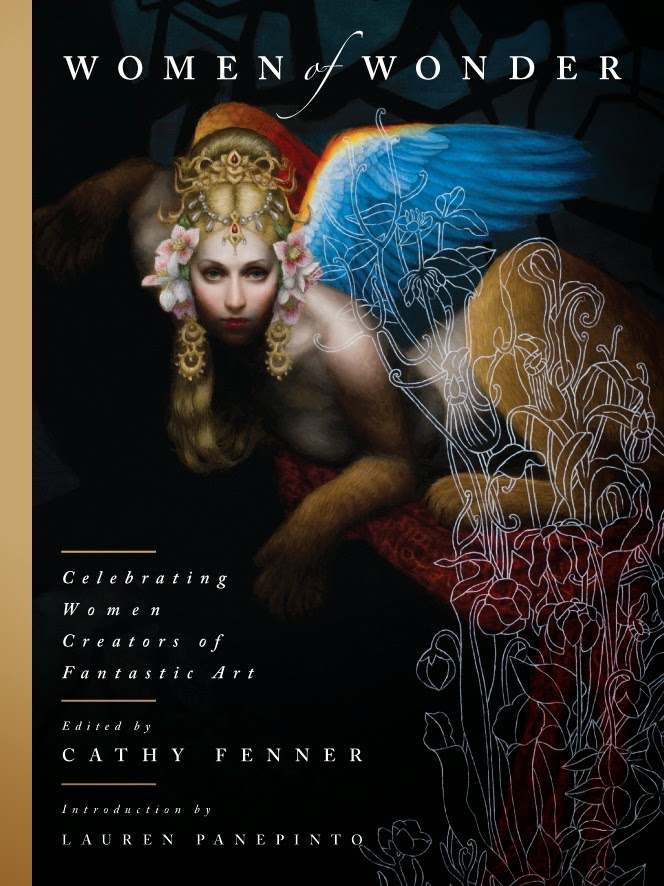

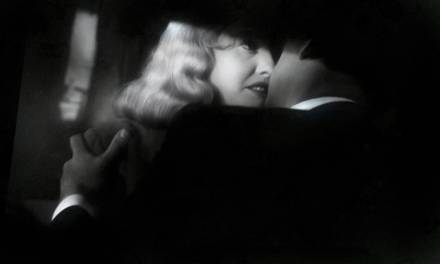
Really cool. I like the colors and how you started with all those shapes.
Learning all the steps behind this gorgeous piece makes me love it all the more!
Such an amazing process!
Stunningly beautiful, and you are so generous to share your process! I’ve been starting to work in a similar way and this is super inspiring. Thank you so much!
Very cool and just lovely.